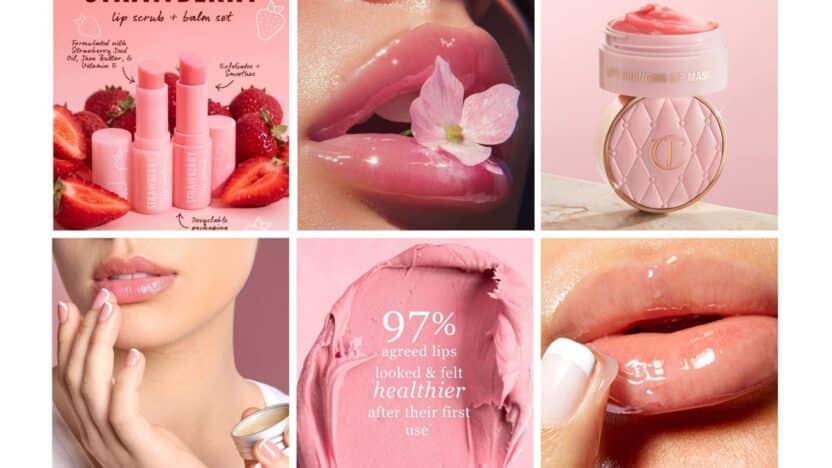Dry, chapped lips can feel uncomfortable and make everyday routines less enjoyable. You keep your lips healthy by combining daily hydration with protective balms, gentle exfoliation, and deeper treatments like masks or butters. With the right care, your lips stay soft, smooth, and ready for any season.
You don’t need a complicated routine to see results. Choosing a balm with nourishing oils, using a mild scrub to remove buildup, and applying an overnight mask can make a noticeable difference. Natural options like shea butter, jojoba oil, or coconut oil offer simple yet effective ways to lock in moisture without harsh ingredients.
By focusing on a few essential steps and using products that work with your skin, you create a routine that’s easy to maintain and delivers lasting comfort. Once you know what to use and when to use it, lip care becomes second nature.
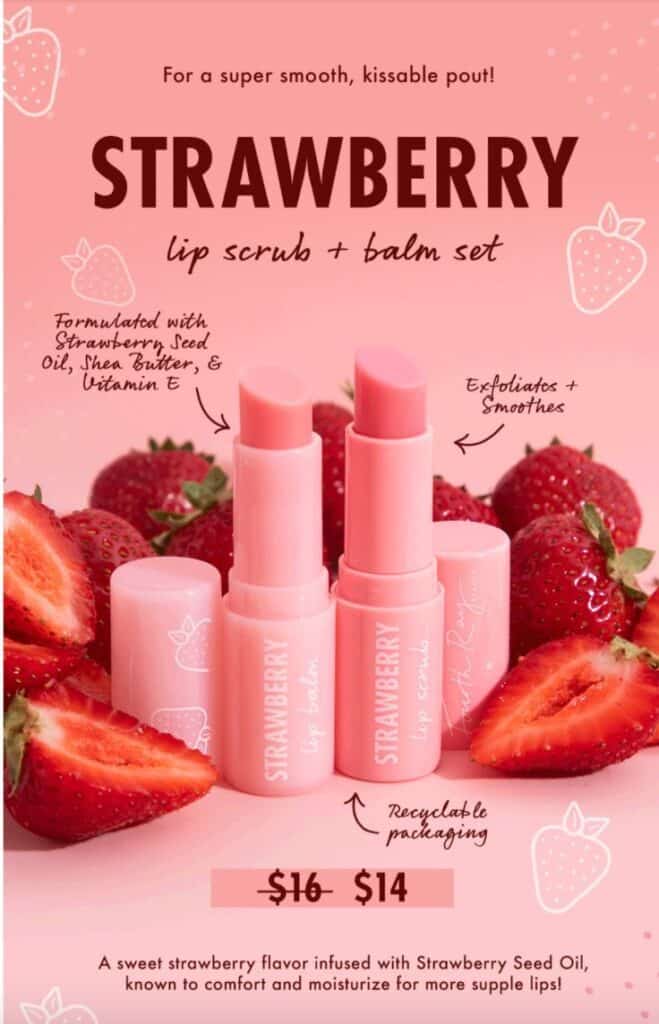
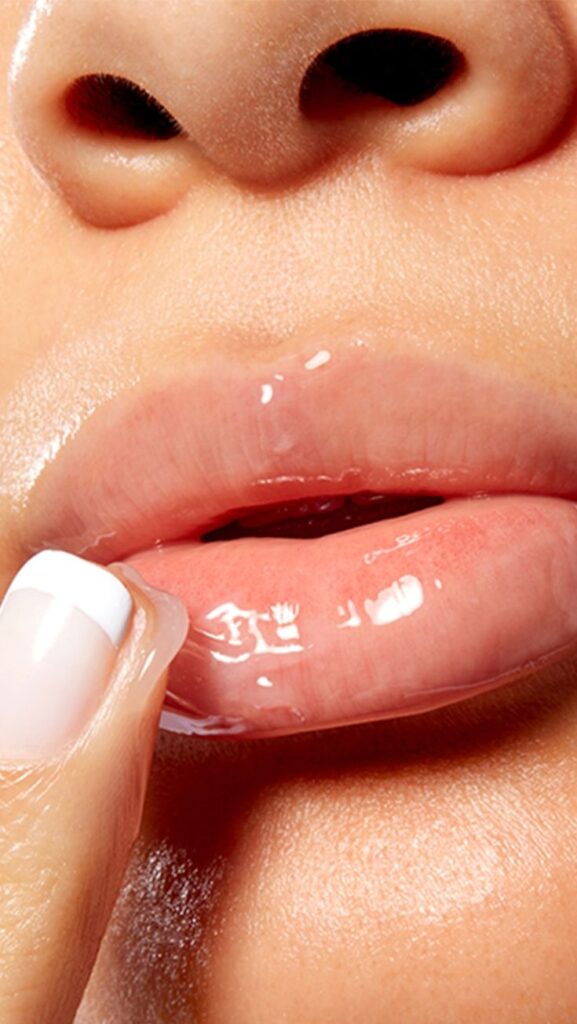
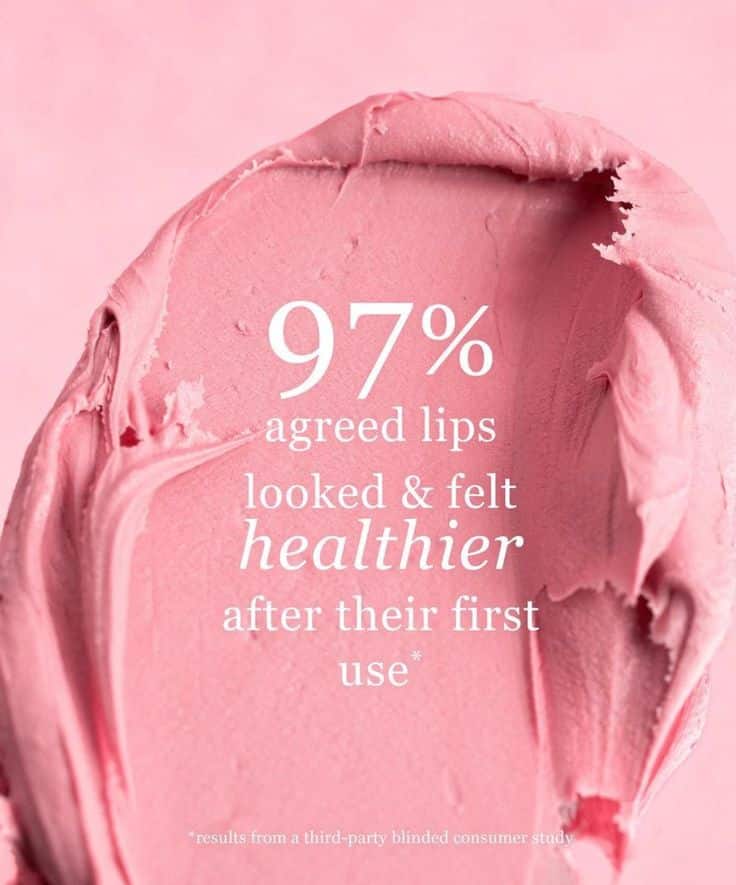
Key Takeaways
- Keep lips soft with daily hydration and protection
- Use exfoliation and deep treatments for long-lasting results
- Choose natural, gentle products to support healthy lips
Understanding Lip Care Essentials
Your lips have thinner skin than the rest of your face, making them more prone to dryness, irritation, and damage. Paying attention to their unique needs helps you prevent discomfort while keeping them smooth, hydrated, and healthy.
Why Lip Care Matters
Healthy lips do more than look good. They protect the sensitive skin barrier around your mouth and help you eat, speak, and smile comfortably. When your lips are dry or cracked, even simple daily activities can feel uncomfortable.
Unlike other areas of skin, lips lack oil glands. This means they cannot naturally produce enough moisture to stay soft on their own. Regular care with balms, masks, or natural treatments provides the hydration they need.
Consistent lip care also prevents long-term issues like chronic chapping or deep cracks. By moisturizing and protecting daily, you reduce irritation and avoid painful flare-ups that may take longer to heal.
The Unique Skin of Your Lips
The skin on your lips is only a few cell layers thick, compared to much thicker skin on other parts of your body. This thinness makes them more sensitive to environmental changes such as wind, cold, or heat.
Your lips also lack melanin, which means they don’t have natural UV protection. Even mild sun exposure can lead to dryness, burns, or premature aging. Using a balm with SPF is one of the most effective ways to protect them.
Because lips don’t contain sweat or sebaceous glands, they rely entirely on external hydration. Products like lip balms with nourishing oils, overnight masks, or gentle scrubs help maintain softness and prevent peeling.
Common Causes of Dry and Chapped Lips
Several everyday factors contribute to dry lips. Cold weather, low humidity, and indoor heating all strip away moisture. Dehydration and not drinking enough water also make your lips more prone to cracking.
Certain habits can worsen dryness. Licking your lips may feel soothing at first, but saliva evaporates quickly and leaves them even drier. Breathing through your mouth or using harsh toothpaste can have similar effects.
Medications, such as those for acne or allergies, often list chapped lips as a side effect. Paying attention to these triggers helps you adjust your routine, whether that means using a humidifier, applying balm more often, or choosing gentler products.
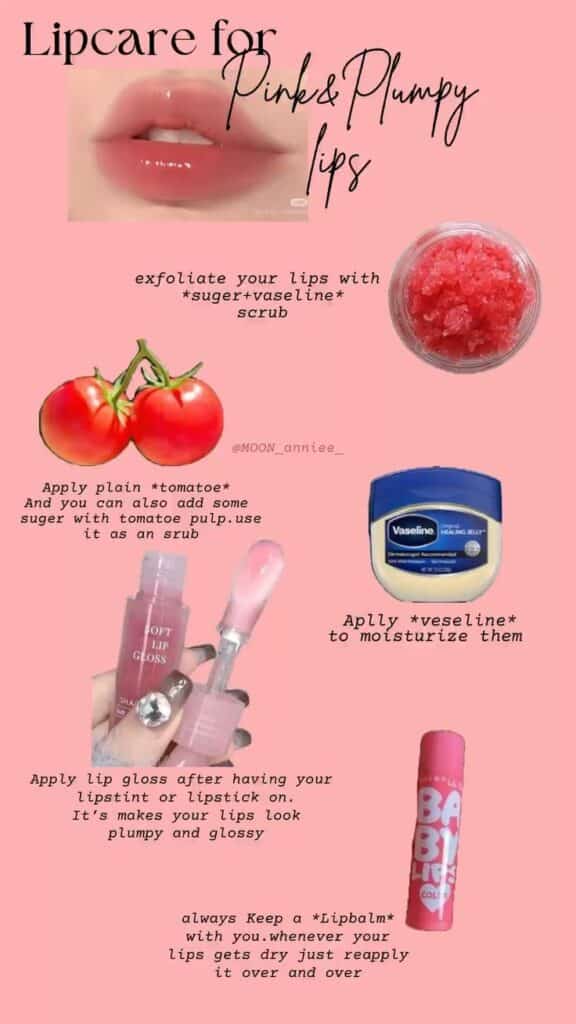
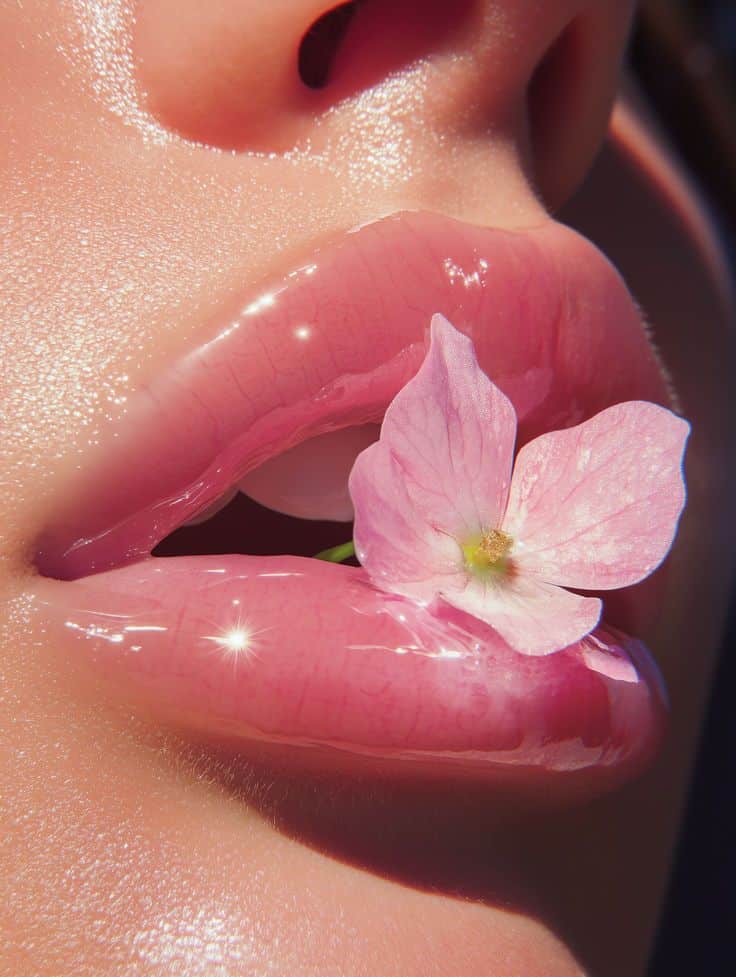
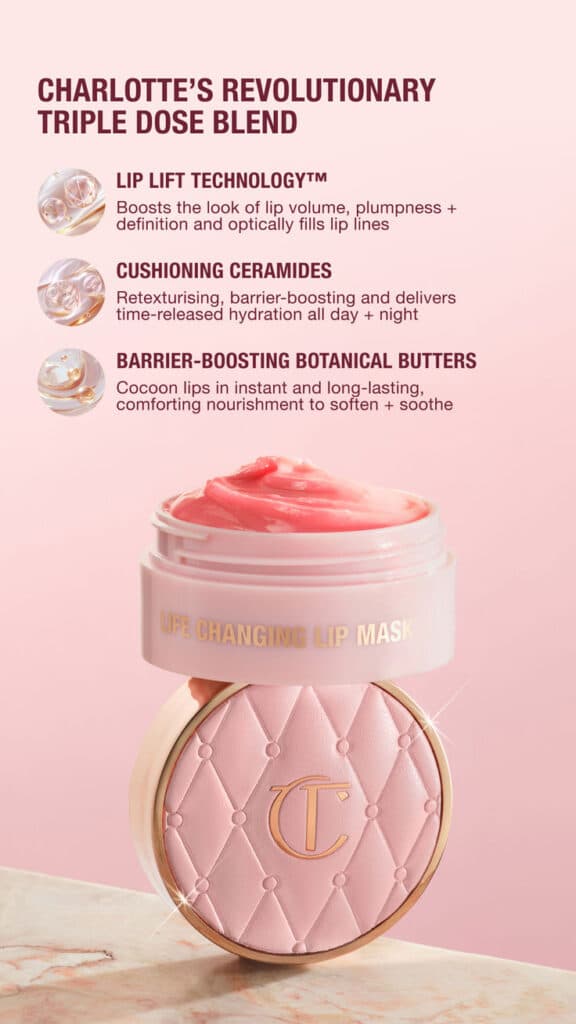
Choosing the Right Lip Balms
You want a lip balm that keeps your lips soft, protects them from dryness, and suits your daily routine. The right choice depends on the type of balm, the ingredients it contains, and whether you prefer a natural look or a hint of shine and color.
Types of Lip Balms
Lip balms come in several forms, and each works best for different needs. Stick balms are compact, easy to apply, and less messy, making them ideal for everyday use. Pot balms often feel richer and more emollient but require using your fingers for application.
You can also find liquid or tube balms, which often have a glossier finish. These are good if you want both hydration and a subtle shine. Some formulas include SPF, which helps protect your lips from sun damage.
For a simple option, petroleum jelly-based balms lock in moisture but don’t add many extra nutrients. If you want more nourishment, look for natural oil-based balms that provide lasting softness.
Key Ingredients to Look For
The ingredients in your lip balm make the biggest difference in how well it works. Shea butter and cocoa butter are rich emollients that smooth dry lips. Oils like jojoba oil, coconut oil, and avocado oil provide lightweight hydration that absorbs quickly.
Vitamin E is a common addition because it supports skin repair and helps prevent chapping. Beeswax creates a protective barrier that locks in moisture while still letting your lips breathe.
If you spend time outdoors, look for balms with SPF protection to help prevent sunburn and long-term damage. Choosing balms labeled as fragrance-free or hypoallergenic can also reduce the risk of irritation if you have sensitive skin.
Benefits of Tinted and Glossy Lip Balms
If you like multitasking products, tinted and glossy lip balms give you both care and style. A tinted lip balm adds subtle color while keeping your lips moisturized, making it a good swap for lipstick on casual days.
Glossy lip balms or balms with a lip gloss finish provide shine along with hydration. They work well if you want a polished look without layering multiple products.
Some tinted and glossy balms also include nourishing ingredients like shea butter and vitamin E, so you don’t have to choose between comfort and appearance. This makes them practical for everyday wear while still enhancing your natural look.
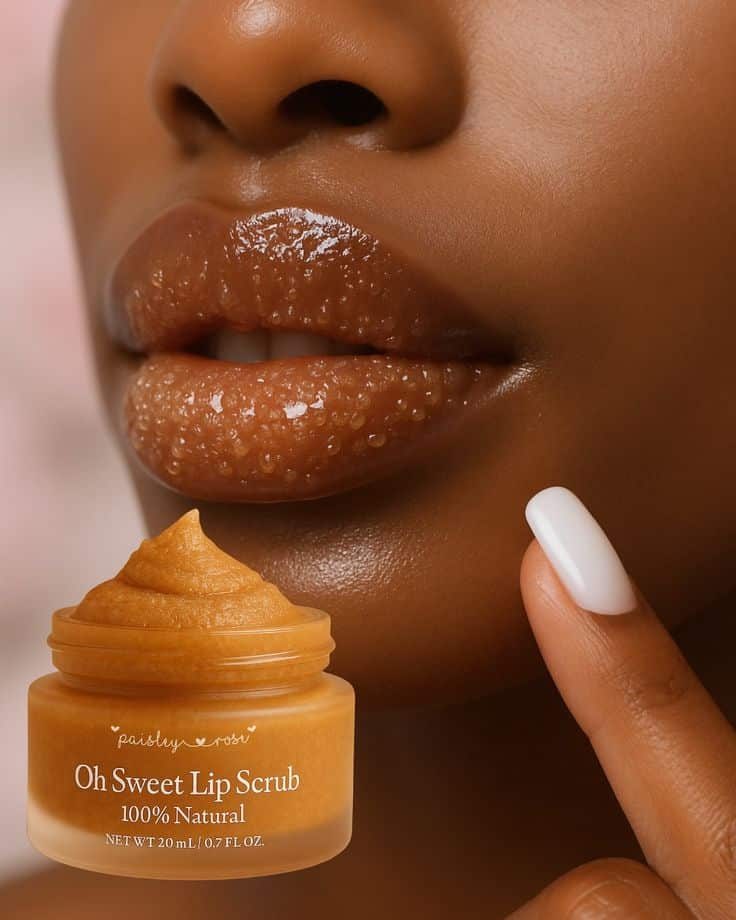

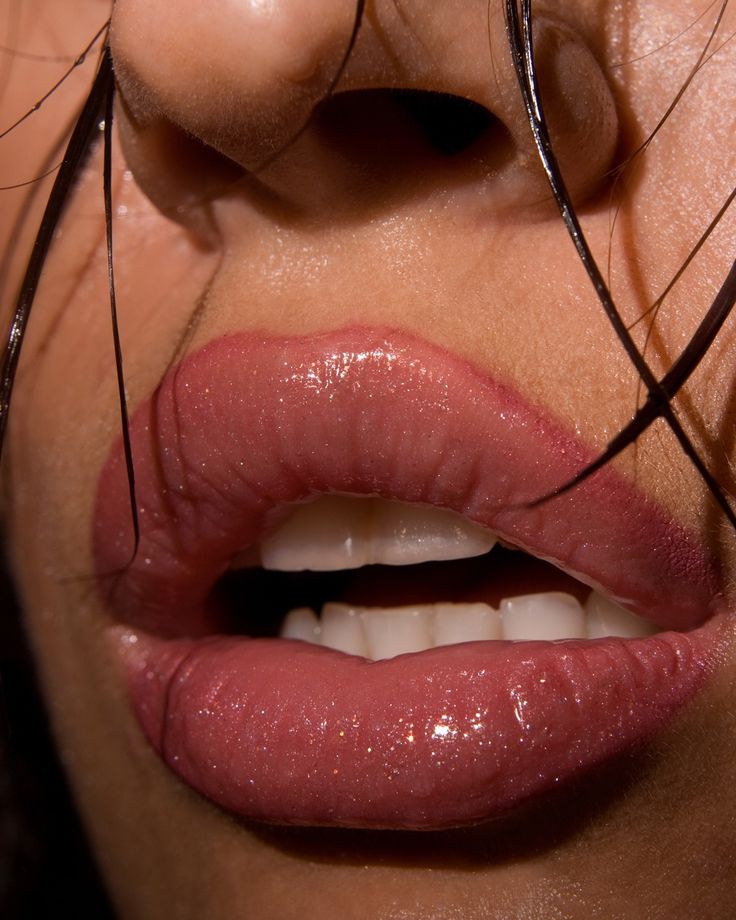
Exfoliation and Lip Scrubs
You can keep your lips smooth and healthy by gently removing dry, flaky skin and then replenishing them with nourishing ingredients. Using the right scrub, safe technique, and simple natural recipes helps you maintain soft lips without irritation.
Why Exfoliating Your Lips Is Important
Your lips don’t have oil glands, which makes them more prone to dryness than other areas of your skin. Exfoliating helps you remove dead skin cells that can make your lips feel rough or chapped.
When you exfoliate, you also improve how well balms and masks absorb into your lips. This means ingredients like shea butter or jojoba oil can hydrate more effectively.
Exfoliation also helps prevent flaky buildup that can interfere with how lipstick or gloss applies. By keeping the surface smooth, your lip products go on evenly and last longer.
Doing this step regularly, but not excessively, supports both appearance and comfort.
How to Use Lip Scrubs Safely
Always start with clean lips free of makeup or product. Apply a small amount of lip scrub and gently massage in circular motions for about one minute. Avoid pressing too hard since the skin on your lips is delicate.
After scrubbing, rinse with lukewarm water and pat dry with a soft cloth. Follow immediately with a balm that contains hydrating ingredients such as shea butter or jojoba oil. This helps lock in moisture after exfoliation.
Limit exfoliation to 1–2 times per week. Over-exfoliating can cause irritation, redness, or even small cracks in the skin. If your lips feel sore or overly sensitive, give them time to recover before scrubbing again.
DIY Lip Scrub Recipes
You can make simple scrubs at home with items you likely already have. A common base is sugar, which acts as a gentle exfoliant. Combine it with a natural oil to create a smooth paste.
Examples:
- 1 tsp sugar + ½ tsp coconut oil
- 1 tsp sugar + ½ tsp honey + a drop of jojoba oil
- 1 tsp sugar + ½ tsp olive oil + a dab of shea butter
Apply these mixtures the same way as store-bought scrubs. Store leftovers in a small airtight container, but make small batches to keep them fresh.
Homemade scrubs are affordable, customizable, and free of unnecessary additives. They let you control exactly what touches your lips while still keeping them soft and smooth.
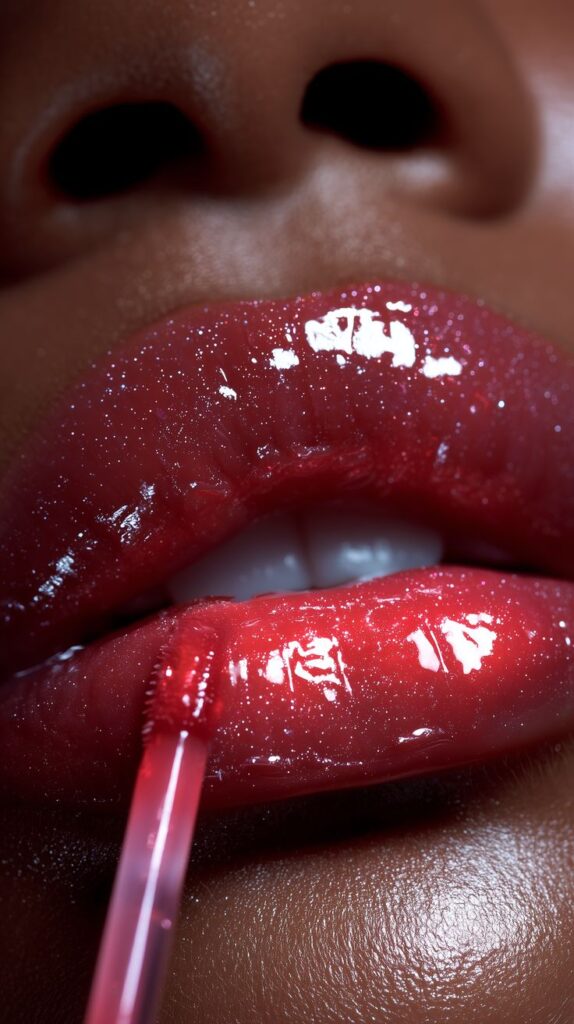
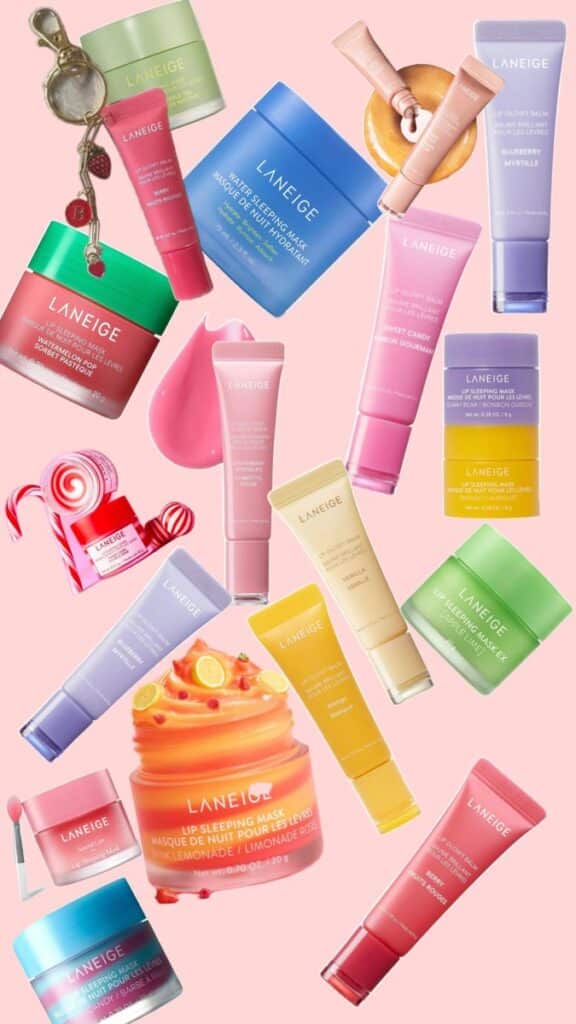

Deep Treatments: Masks, Butters, and Overnight Care
You can give your lips deeper care by using treatments that focus on hydration, repair, and protection. Ingredients like hyaluronic acid, vitamin C, and natural butters provide targeted support that goes beyond daily balm use.
Lip Masks for Intensive Hydration
A lip mask works like a concentrated moisturizer that you leave on for an extended time. Unlike regular balms, masks are usually thicker and designed to lock in moisture while repairing dryness. You can use them a few nights a week or whenever your lips feel especially rough.
Common ingredients include hyaluronic acid for drawing in water, peptides to support firmness, and vitamin C for antioxidant protection. Natural options often feature honey, aloe vera, or shea butter, which soothe and soften.
Apply a generous layer after cleansing your lips. Some masks are rinse-off, but many are designed to stay overnight. In either case, the goal is to create a barrier that prevents water loss while nourishing the skin underneath.
For best results, gently exfoliate with a damp cloth before applying. This removes dead skin and allows the treatment to absorb more effectively.
The Benefits of Lip Butters
Lip butters are thicker than standard balms and provide a cushion-like layer of moisture. They are often made with mango butter, shea butter, or cocoa butter, which melt into the skin and leave a smooth finish.
These butters are especially helpful if your lips crack easily or if you live in a dry climate. They form a protective coating that lasts longer than lighter products.
Many formulas also include vitamin C for brightening and peptides for supporting skin repair. Plant-based versions avoid synthetic waxes and instead rely on natural oils and butters.
You can use lip butters during the day, but they are most effective when applied in a thicker layer at night. This gives the ingredients more time to sink in and restore softness.
Overnight Lip Care Tips
Nighttime is the best opportunity to treat your lips because your skin naturally repairs itself while you sleep. Using a thicker product like a lip mask or butter helps maintain hydration for several hours without interruption.
Before bed, cleanse and lightly exfoliate your lips to remove buildup. Then apply a generous layer of your chosen treatment. Focus on products with hyaluronic acid or shea butter for deep moisture.
If you want extra benefits, choose formulas with vitamin C to help reduce dullness and peptides to support smoother texture. Avoid licking your lips during the night, as this can undo the hydration.
For very dry conditions, you can layer a balm over your mask or butter. This locks in the treatment and prevents it from rubbing off on your pillow.
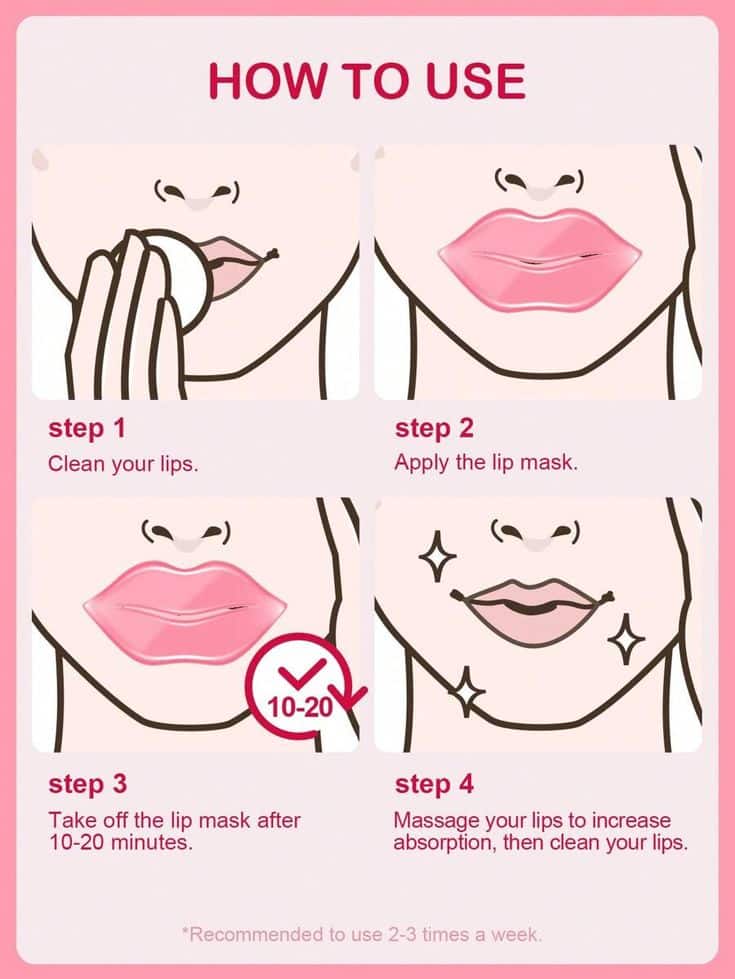

Natural and Clean Lip Care Options
You can keep your lips healthy with ingredients that both protect and restore moisture. Choosing the right products and even making your own blends helps you avoid unnecessary additives while focusing on what actually works.
Natural Ingredients to Nourish Lips
Your lips benefit most from plant-based oils and butters that provide lasting hydration. Shea butter is a common choice because it softens dry skin and locks in moisture without feeling heavy. Jojoba oil is another favorite since it closely mimics your skin’s natural oils, making it easy to absorb.
For added protection, look for vitamin E, which works as an antioxidant to support skin repair. Coconut oil and almond oil also help reduce dryness and keep lips smooth.
When you apply these ingredients in a lip balm or lip butter, they form a thin layer that shields against wind and sun exposure. Unlike synthetic waxes, these natural ingredients usually melt into the skin instead of sitting on top, giving you a more comfortable feel.
How to Choose Clean Lip Products
When shopping for lip care, check the ingredient list first. Skip products with petroleum derivatives, parabens, or artificial fragrances, since these can irritate sensitive skin. Instead, focus on formulas made with plant oils, nut butters, and natural waxes like beeswax or candelilla wax.
Many clean lip products highlight their base ingredients, so you’ll often see shea butter, jojoba oil, or vitamin E listed near the top. These are reliable signs that the product is designed for hydration rather than filler.
It helps to choose brands that are transparent about sourcing. Certifications like organic or cruelty-free can also guide your decision if those values matter to you. A simple rule: if you wouldn’t want it in your body, don’t put it on your lips.
Homemade Lip Balm and Butter Ideas
Making your own lip care lets you control exactly what goes into it. A basic recipe often includes shea butter, coconut oil, and a natural wax to give the balm structure. You can melt these together, pour into small tins, and let them set.
For extra nourishment, add a few drops of vitamin E oil or jojoba oil. Both help extend shelf life and give your balm more skin-friendly benefits. If you prefer a softer texture, increase the butter-to-wax ratio for a creamier lip butter.
You can also customize with mild essential oils like peppermint or lavender, but keep the amounts very small to avoid irritation. With just a few ingredients, you’ll have a simple, effective product that rivals many store-bought options.
Daily Routines and Special Considerations
Keeping your lips healthy requires simple but consistent steps. Daily care helps prevent dryness, while added protection and targeted treatments support you when your lips face extra challenges.
Building an Effective Lip Care Routine
Start by cleansing your lips gently. A soft washcloth or damp cotton pad removes buildup without stripping natural oils. Avoid harsh soaps since they can dry out delicate skin.
Exfoliation helps when you notice flaking or rough patches. Use a soft toothbrush or a mild sugar scrub no more than once or twice a week. Over-exfoliating can cause irritation, so keep it light.
Hydration is the most important step. Apply a nourishing balm with ingredients like shea butter, coconut oil, or jojoba oil several times a day. Reapply after eating or drinking to maintain moisture.
At night, you can use a thicker balm or an overnight lip mask. This creates a barrier that locks in hydration while you sleep, helping you wake up with smoother lips.
Protecting Lips from the Elements
Your lips have thinner skin than the rest of your face, so they are more vulnerable to weather and sun damage. Cold air, wind, and low humidity can quickly lead to chapped lips.
During the day, choose a balm with SPF 15 or higher. Sun exposure not only dries lips but also increases the risk of long-term skin damage. Reapply sunscreen balm every few hours, especially if you spend time outdoors.
In dry indoor environments, a humidifier can help maintain moisture levels. Drinking enough water also supports hydration from within, reducing the chance of cracked or peeling lips.
When facing harsh winds, apply a protective balm before going outside. Look for formulas that create a light barrier without feeling sticky.
Addressing Persistent Lip Concerns
If your lips remain dry or cracked despite daily care, you may need to adjust your routine. Some lip products with fragrances or menthol can worsen irritation, so check ingredient labels carefully.
For frequent chapping, switch to balms with minimal ingredients and strong emollients. Petroleum jelly or lanolin-based products often work well for sensitive lips.
Persistent peeling or pain may signal an underlying issue like eczema, allergies, or even a fungal infection. In these cases, it’s best to consult a dermatologist.
You can also keep track of triggers. For example, licking your lips, dehydration, or certain foods may contribute to ongoing dryness. Identifying these habits helps prevent repeated irritation.


